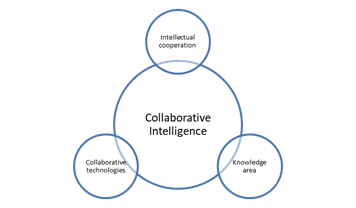María Ángeles Ramírez-Peña1![]() y Carlos Rodríguez-Monroy2
y Carlos Rodríguez-Monroy2![]()
1angeles.ramirez.pena@urjc.es, 2carlos.rodriguez@upm.es
In this work, a literature review on the concept of Collaborative Planning (CP) is carried out. The rise in the study of this factor has been confirmed by, among others, the research and innovation agendas of the European Union, specifically through the ENoLL (European Network of Living Labs) concept.
The ENoLL was founded in November 2006 and is one of the most important global reference networks for social innovation and open innovation. At that time, it focused on competitiveness and the development of innovation policies and practices to create a favorable environment for innovation in Europe. Innovation occurs when there is intrapersonal diversity, but it is not always possible to include individuals with different characteristics in a group or team, so we must consider how teams can help themselves produce the required innovation [1].
Previously to the founding of ENoLL, the need for the creation of innovation from the co-creation of knowledge by different agents was raised. This concept was put forward by authors which conceived this construct as Collaborative Intelligence.
Collaborative Intelligence, hereinafter CI, is an old concept although it is scarcely developed or valued in the literature. Certain problems which depend on individual, group and organizational factors affect its development [2]. CI is based on three fundamental pillars:

Based on (Lee & Lan, 2007) [3]
The multitude of projects which can be carried out in any area of knowledge leads to the need to analyze the incidence of the aforementioned factors to achieve them. According to the research carried out to date, it has been corroborated which, among the group factors, collaborative planning is a determining factor [4].
In addition, it is also due to the numerous actors, intellectual collaboration, which participate and the growing use of computer applications which bring together information and knowledge.
In this study a number of projects are mentioned, to be presented at the end of 2020 or early 2021, ranging from improving the instruction which teachers receive in their interventions with their pupils [5], through the recovery of natural spaces [6], as well as transport planning in a big city [7,8].
The cases analyzed in this study show which CP has an impact on the pillars that make up CI, as if they were the main ingredients, and in all phases of any project. It has a positive impact on the processing of information, the organization of knowledge, the team’s rapport and efficient results, as well as on the positive evolution of projects and the achievement of innovation [9] and, therefore, of competitive advantage for the organization.
References
- S. Connelly y T. Richardson, «Exclusion: The Necessary Difference between Ideal and Practical Consensus,» J. Environ. Plan. Manag., 47, p. 3–17, 2004 .
- M. Ramírez-Peña, «La toma de decisiones en equipo,» de Management in a Smart Society: business and technological challenges, Tokio, 2019.
- M. Lee y Y. Lan, «From Web 2.0 to Conversational Knowledge Management: Towards Collaborative Intelligence,» Journal of Entrepreneurship Research. (2). Nº2, pp. 47-62, 2007.
- H. Lee y B. Choi, «Knowledge Management Enablers ,Processes and Organizational Performance: An Integrative View and Empirical Examination,» Journal of Management Information Systems / Summer 2003, Vol. 20, No. 1, p. 179–228, 2003.
- E. Kuntz y E. Carter, «Effects of a Collaborative Planning and Consultation Framework to Increase Participation of Students with Severe Disabilities in General Education Classessobre,» Research and Practice for Persons with Severe Disabilities (46) 1, pp. 35-52, 2021.
- G. Lupp, A. Zingraff-Hamed, J. Huang, A. Oen y S. Pauleit, «Living Labs-A Concept for Co-Designing Nature-Based Solutions,» Sustainability (13) 1, p. 1532, 2021.
- J. Fitzgibbons y C. Mitchell, «Inclusive resilience: Examining a case study of equity-centred strategic planning in Toronto, Canada,» Cities,108, p. 102997, 2021.
- S. Eckersten, B. Balfors y U. Gunnarsson-Östling, «Challenges and Opportunities in Early Stage Planning of Transport Infrastructure Projects: Environmental Aspects in the Strategic Choice of Measures Approach,» Sustainability,13, pp. 1-18, 2021.
- G. Dess, A. Rasheed, K. McLaughlin y R. L. Priem, «The new corporate architecture.,» Academy of Management Perspectives, 9(3), pp. 7-18, 1995.
